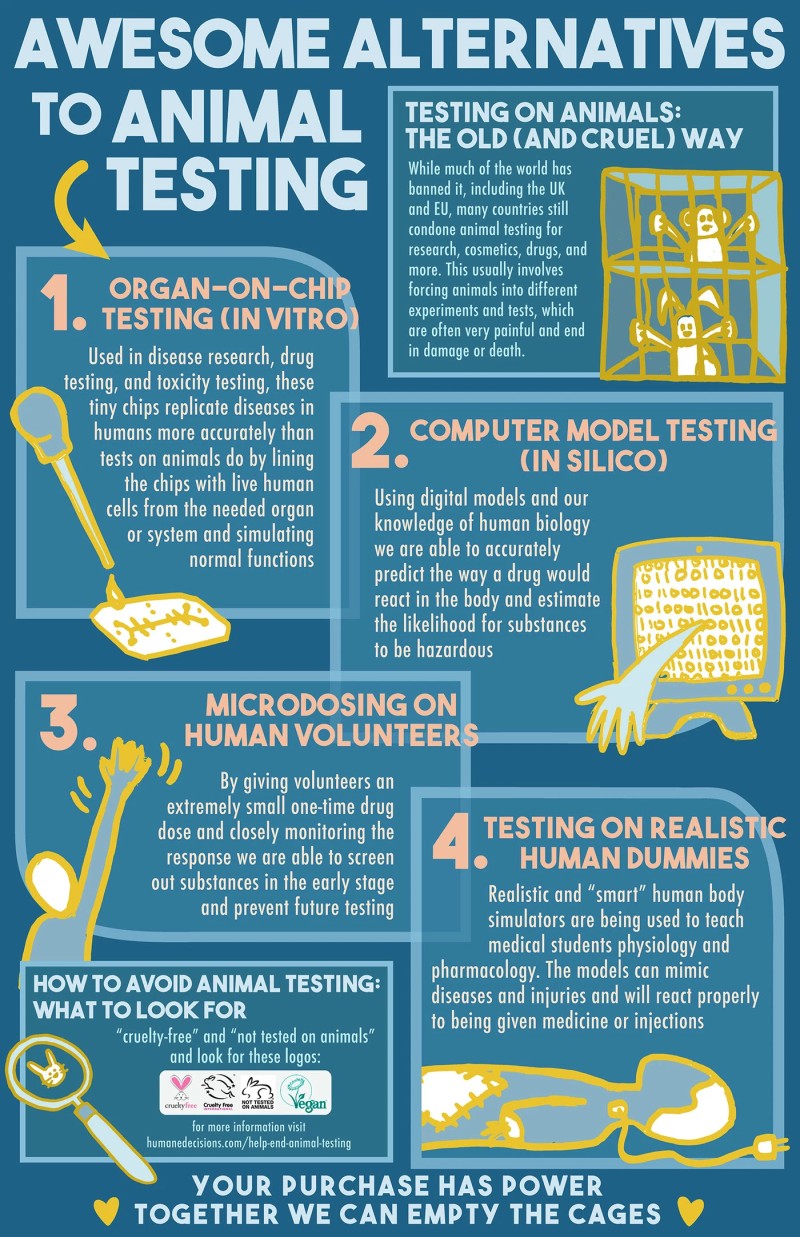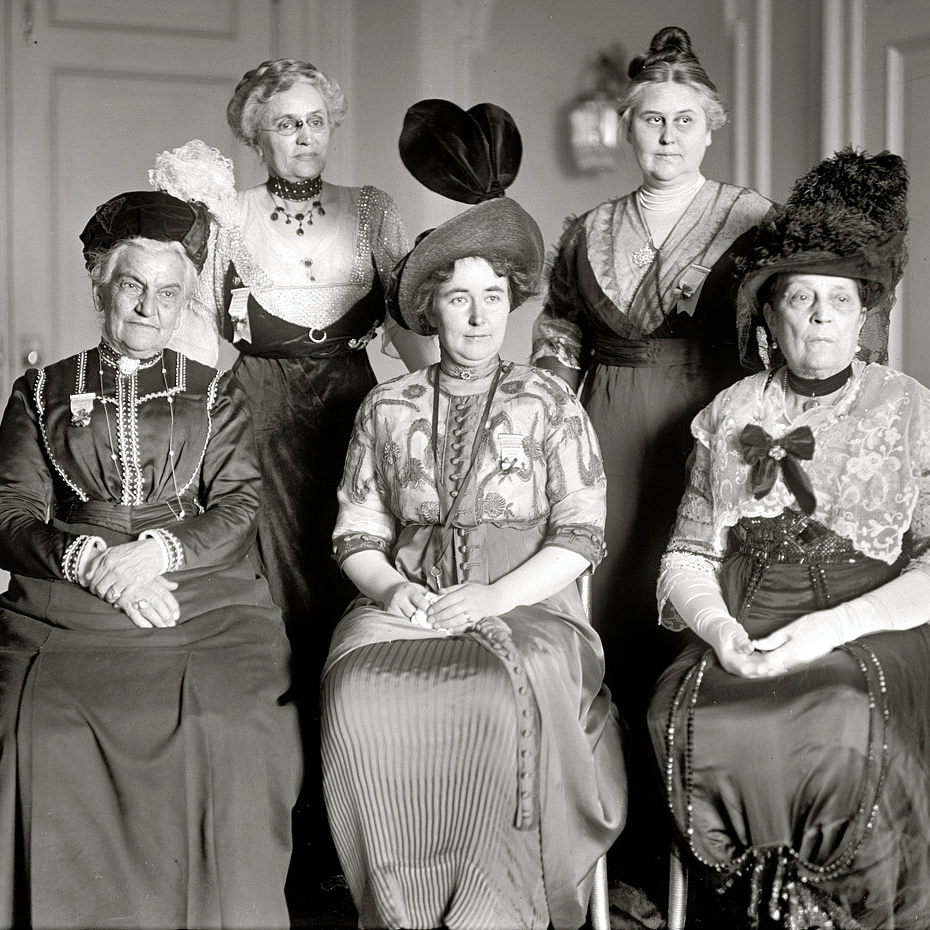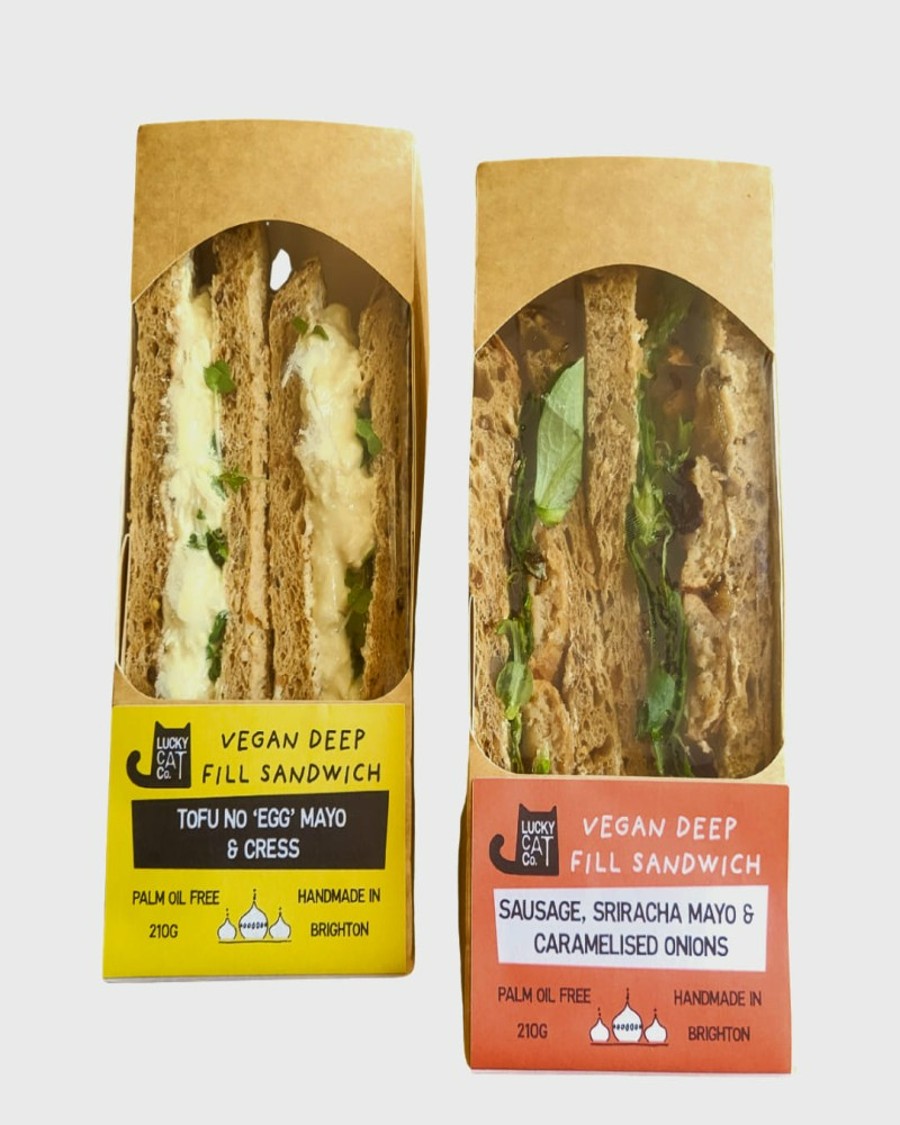Switch Donations to Humane Medical Research

Herbie’s Law is an ongoing campaign presently going through Parliament, aiming to replace medical research with humane alternatives. Ruth Jones MP has tabled an Early Day Motion on behalf of Animal Free Research UK, inspired by a similar process happening in The Netherlands.
The campaign is named in honour of a beagle who was bred for the lab. He was one of the lucky ones, his grey chin hairs showing that apart from the tell-tale tattoo on his ear, he managed to escape, and ended up in a loving home (with the charity’s CEO).
Over 92% of drugs that show promise in animal tests, fail in clinical trials. Switching to humane methods of research is not just kinder, but more accurate.
Read this blog post by Kitty Block (president of Humane World for Animals), asking why animal research is still going on, despite humane medical research being far more accurate, kinder, quicker and cheaper.
The Case for Humane Medical Research

Switching your donation to humane medical research is more than a kind gesture, it’s a smart move that backs better science, saves money, and puts your values front and centre. The story is shifting, and new methods are showing up old habits. Here’s why your support can do much more in the right hands.
Science is Better Without Animals
Animal–free research doesn’t just sound nicer. It works better. Many animal models give results that don’t match well with humans. That’s where animal–free models come in. Tools like organ‑on‑chip and computer simulations let scientists copy human biology in ways a mouse never could.
Most drugs that seem safe on animals fail in human trials. Recent UK studies have shown that human cell models and 3D tissue cultures pick up side effects and reactions that animal tests miss. These newer models provide clues that are actually useful for people, leading to fewer failed trials and safer results.
What does this mean for donors?
- The medicine you fund gets to patients faster.
- There’s a higher chance research leads to real cures.
- Your money boosts advances that help people right now, not just theory.
Cheaper and Faster
Animal tests take time and cost a lot. When researchers use animal‑free methods, they move quicker and spend less. Organ‑on‑chip tech and digital models can run several times faster than live animal work.
A recent comparison found:
- One year of rat testing for a single drug can cost up to £1.4 million.
- A full organ‑on‑chip set‑up to test the same drug costs about £300,000.
- Digital simulations are even cheaper, sometimes running for less than £100,000 per study.
What Counts as Humane Research?

Organ‑on‑chip and Test‑tube Methods
Imagine a tiny chip, about the size of a USB stick, but packed with living human cells. This is the “organ‑on‑chip”. Scientists insert human cells from the heart, lung, kidney, or even skin into narrow channels inside the chip. They then pump nutrients through the chip, creating a mini version of the real organ.
Researchers watch what happens when a new drug or treatment travels across these cells. They can see side effects or benefits that would show up in real people.
Organ‑on‑chip tech has found problems in drugs that animal tests missed. For example, the “lung-on-chip” has spotted how asthma drugs can affect real human airways. It’s a fast way to see what really works―no animals, just human results.
Test‑tube work isn’t out of fashion either. Called “in vitro studies”, this basic science puts real human cells in dishes and exposes them to drugs or sickness. It is still a staple for early-stage safety testing and helps rule out risky compounds quickly. Think of it as the first line of defence. Countless lives have been saved by finding toxic responses in the dish before a trial ever reaches a patient.
You’ll often see breakthroughs start in the test tube or on a chip before moving forward.
Bio‑printed Tumours and 3D Cell Cultures
3D bioprinting is now like a science-fiction promise come true. With these “bio-printers”, scientists build tiny tumours layer by layer out of living human cancer cells. These mini-tumours can respond almost exactly like those in a real person.
For example, charities supporting breast or brain cancer research now use 3D-printed tumour models to screen dozens of treatments at once. This all happens in the lab, not in mice. Results are more in line with what patients will see. No more wondering if the cancer drug will “translate” from mouse to human.
Alongside bio-printed tumours, 3D cell cultures matter for more than cancer. These models mimic real tissues so researchers can study healing, scarring, or toxic side effects. They help fine-tune doses and catch harmful reactions missed in flat, 2D cell dishes.
You’re supporting a smarter, more human-based approach when you back these projects.
Computer Modelling, AI and Digital Twins
Now, tech takes a front seat. Computer models and artificial intelligence (AI) can “predict” how drugs move, break down, or interact with real people, far faster than any animal study.
AI-trained digital twins act like a virtual patient. Each twin is a computer copy built from loads of health data, such as blood tests, scans, genetics, or medical history. Researchers can run hundreds of “what if?” tests to see how the body reacts. Does the drug cause an allergic reaction? Will it mess with the heart? The AI flags the risks before a single pill is made.
Some people are against AI. But in circumstances like this, it can stop animal testing, and save lives with safer and more accurate quicker results. How can that be wrong?
Drug companies use these digital models to weed out unsafe drugs and adjust doses for different age groups or risk factors. One asthma drug, for example, was fine-tuned for children using only computer simulations before it moved into real kids’ trials.
Computer modelling saves both time and lives:
- It spots side effects sooner.
- Scientists can test thousands of drug combinations almost overnight.
- There’s no need for a living test subject until the science is far safer.
These digital tools are now as important as lab work, giving you peace of mind that your donation speeds up real solutions with zero animal testing.
Support Humane Research Charities
Once you know where your money goes, it feels better to give. Many want to skip supporting animal tests, but do not know where to start. There is a simple way—pick groups that back people and science, not animal suffering.
Plenty of charities now refuse to use animals, focusing funds on research that matters for people. By donating to the right groups, every pound backs clean, modern science. Here are some of the best-performing UK charities and what they do with your support:
- Animal Free Research UK This charity backs projects that use only human cells, tissues, or digital models. Donations help students and early-career researchers skip animal work and use organ-on-chip, human cell studies, and advanced computer maths.
- The Humane Research Trust This group funds research that never involves animals. Money given here supports safer, human-focused tests for cancer, heart disease, and more. They also campaign for wider adoption of animal-free science in UK policy and practice.
- Replacing Animal Research Formerly FRAME, this charity (founded by Wimbledon housewife Dorothy Hegarty, who believed through collaboration we could create a better for animals and humans. Funding humane alternatives for over 50 years, recent projects have included a chronic wound infection model, a model of a brain injury and invitro bone models.
- NAVS (National Anti-Vivisection Society) has been funding and promoting ethical research for almost 100 years. It’s also been at the forefront of ending classroom dissections. This charity was founded by Miss Frances Power Cobbe, a ‘forgotten Victorian feminist’ who also campaigned against domestic abuse.
Each pound you send goes towards a future where people—not animals—are at the centre of research. Choosing one or more of these charities means your values line up with your giving.
You can always donate anonymously to your favourite small charities, using Charities Aid Foundation. Add Gift Aid if you’re a UK taxpayer.
easyfundraising is a great way to raise money, as it donates money to your favourite causes, from items you already buy. Just sign up, and if you shop at one of the 6000 brands (from local zero waste shops and indie brands to Amazon and Argos), you donate simply from buying train tickets to laptops to insurance.
Retailers pays a set fee or percentage, depending on their policy. Donations are sent to charities each quarter, and the service does not affect loyalty points.
Don’t Be Emotionally Blackmailed
This is the biggie. Because the second you decide to switch donations to humane medical research charities, the charities and nearly everyone else, will accuse you of ‘not caring about cancer patients’ or the often quoted ‘you care more about animals than humans’.
Actually, caring about humans should be about donating to charities that are using accurate methods, so this would also be donating to humane medical research. It’s a win-win.
If someone asks you to donate to an animal-testing charity, there’s no need to get into an argument. Just politely reply:
‘Thank you, but I have researched charities that test on animals, and now choose to donate to humane medical research’.
Animal welfare campaigner Karen Dawn once wrote how people would suggest that people who care about animals, ‘don’t care about humans’. Her answer was simple: compassion is compassion.
It’s not like a pie. If you have compassion towards animals, it’s likely you have just as much compassion for humans, as you’re likely a kind loving person. ‘Giving kindness’ to animals, does not mean that you then have to ‘take away’ kindness to humans’.
When George Ansell (who founded a US organisation similar to the RSPCA) was once asked why he spent time being concerned about animals, when there was so much cruelty to humans. His answer was again simple. He replied ‘I am working at the roots’.
Donate Your Body to Medical Science

Giving your body for science means backing research that truly helps people. UK donation programmes keep the paperwork simple and use these generous gifts to train new doctors, build better treatments, and fuel animal-free research.
Here are the main places to register your interest:
- Human Tissue Authority (HTA): They oversee body donation for research and medical teaching across England, Wales, and Northern Ireland. Their site lists every medical school that accepts donations and answers common questions.
- Scottish Body Donation Programmes: In Scotland, each university medical school (Edinburgh, Aberdeen, Dundee, Glasgow, St Andrews) handles its own donations, guided by the Anatomy Act.
Healthy bodies are important too (it’s important to compare say a healthy brain with that of someone who died of dementia).
The paperwork is straightforward:
- Fill out a consent form. All programmes require signed consent before death. Forms are usually available online.
- Notify your next of kin. Let family and your GP know about your decision, as their approval is needed at the time.
- Send forms to your chosen medical school. Keep a copy on record with family for clarity.
Policy Push: Ruth Jones MP and Early Day Motion
Direct donation changes lives, but policy change sets the rules. People want to see animal-free methods become the main path in the UK. Ruth Jones MP has put forward an early day motion in Parliament, calling for more funding and focus on humane, animal-free research.
The early day motion asks for:
- More public money for animal-free medical research.
- Action to update rules that still demand old animal tests.
- More open reporting by all UK medical charities on how funds are used.
You can help this political push. If you want this motion backed, you can:
- Contact your MP: Write a personal email or letter asking them to support Ruth Jones’s motion for animal-free science.
- Share on social media: Raise public awareness. Share details about the motion and tag your MP.
- Sign charity petitions: Many humane research groups run online petitions to show public demand for policy change. Add your name when you spot them.
Success stories that show it works
Organ‑on‑chip cuts therapy time
UK labs have moved fast in cancer research thanks to organ-on-chip technology. In 2022, a London-based team used lung-on-chip models to test a new treatment for aggressive lung cancer. This chip was no gimmick. It let scientists grow layers of actual human lung cells inside see-through devices. Drugs were added just as they would be in a patient.
Instead of waiting years for mouse trials, the chip tests took months. The team watched, in real time, how the cancer cells reacted to therapy. Side effects showed up quickly and accurately, which meant the researchers adjusted the formula on the spot.
AI-driven models pinpoint new drugs
AI has started to shake up brain disease research in the UK. Where animal studies struggle to mirror the complex human brain, computer models and big data are stepping in. A recent Oxford project used AI to scan through thousands of drug compounds and compare them against real patient data.
The AI model “learned” what worked for early Parkinson’s and Alzheimer’s cases by matching up genetics, brain scans, and blood tests. Then, researchers ran virtual experiments on these digital twins—lifelike copies of a patient’s brain and body. The AI flagged two promising drugs for Parkinson’s and another three for Alzheimer’s.
America’s Beagle Freedom Project

In the US, the charity Beagle Freedom Project adopts ex-vivisection dogs to new homes. You can find on YouTube heart-warming videos of volunteers removing their ‘numbers’ and giving the dogs names.
On release, these dogs are terrified – but within minutes they are running around with their fellow dogs, smiling and sniffing grass for the first time in their lives.
The Story of Battersea’s Little Brown Dog

Heroines to remember at International Anti-Vivisection Congress, 1913
Around 100 years ago, only a few hundred (bad enough) animals suffered. The little brown dog (whose suffering caused riots between anti-vivisection campaigners and medical students) is now commemorated as a statue in London’s Battersea Park. Victorians led the way to found societies campaigning for alternatives.
The lady in the centre was Lizzy Lind of Hageby, a Swedish-British woman who was one of our most noted anti-vivisectionists, back in the day (along with writers James Allen and George Bernard-Shaw). She and others even enrolled at medical school, so they could fight their argument using science.
Educated at Cheltenham Ladies College, while other graduates were learning to embroider things, she was out leading rallies for animal welfare. When in 1914 one Daily Mail journalist at Glasgow Vegetarian Society expected to find a ‘square-jawed and severe women’ he found a ‘pretty women with twinkling brown eyes in a blue dress’, who was so logical in her arguments that he almost converted on the spot!
Vivisection is a social evil. Because if it advances human knowledge, it does so at the expense of human character. George Bernard Shaw
In later years, Lizzy set up veterinary hospitals for horses wounded in the war, protested against hunting pregnant hares, opposed the sale of old horses to slaughterhouses, and opened a sanatorium in France for wounded soldiers. She left most of her estate to The Animal Defence Trust, which even today gives grants to small animal welfare causes. What a woman!






